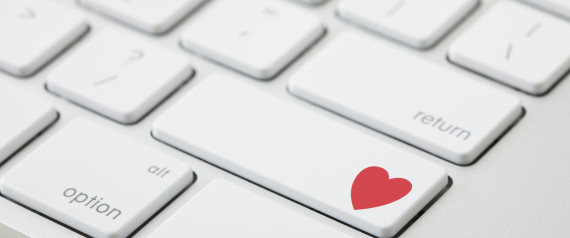Online Dating in 2015: The Good, the Bad and the Problematic

Recently I found myself at a bar in New York City on a Friday night with another female friend, where we had a starkly twenty-first century encounter. A polite man in his early thirties who was alone at the bar helped my friend and I find adjacent bar stools. He then sat on the stool next to my friend, and some other young women were sitting on his other side. I had a strange urge to study that man and saw him pull out his phone shortly after everyone in the immediate vicinity was seated. Not long after, he opened the Tinder application. For the next few hours, he sipped on his drinks and swiped away at pictures of women on this popular dating app, while physically surrounded by various women in their mid to late twenties, many of whom could possibly be single and available.
Maybe that doesn’t sound very strange to most people in 2015, but I was pretty taken aback, as the sociologist in me wondered what this man’s actions meant for society and its future. Somehow within the last few years, online dating has transformed from a deviant and stigmatized social practice to one of the most normative forms of meeting potential romantic partners. Therefore, we have to talk about its implications.
In many ways this is great news: we don’t like unsubstantiated social stigma, and this sure allows for a wider range of the community – including those that may experience trouble approaching potential suitors because of a myriad of potential social anxieties – to explore romantic possibilities. In the Western world and countries like the U.S. a substantially large population has access to this system: really all you need is a mobile device and Internet connection. It is at once the most socialist and capitalist forms of dating, too. Most people have equal access to these platforms and the users within these platforms, yet those with the highest erotic capital are the most likely to succeed. While this is slightly concerning in that any hierarchical distribution of human beings is concerning, it is not all that different from the non-virtual social world. People are attracted to people they find attractive – excuse my tautology – whether because of inherent or socially conditioned preferences, both online and offline. I’m not qualified to discuss the problems associated with that at length; however, I would like to address a tangentially related, possibly much larger social problem that online dating seems to have gotten some reputation for perpetuating: that of race and racially based discrimination.
According to data collected by OkCupid, another popular online dating platform, racially based bias in choosing potential romantic partners has increased between 2009 and 2014! People have less control over who occupies physical spaces traditionally popular for meeting people, such as bars or cafes, so they are more likely to meet and approach people from different racial backgrounds. However, in online dating, the options are numerous, allowing for the room to discount any potential candidate for any reason whatsoever. To provide a non-race related thought experiment: an extremely left-of-center woman, whose politics are integral to her life, encounters an attractive man at a bookstore and decides to approach him. They talk and there is instant spark, so they go on a few dates. On their third date the woman finds out the man’s political beliefs are extremely right of center. Whether or not it is a deal breaker in this scenario depends somewhat on the first two dates. In the online dating version of this, there probably wouldn’t be two dates to begin with because people often have information like political beliefs listed on their profile, and because there are so many choices, this hypothetical woman would have little need to give this hypothetical man a chance.
The problem is: alignment of political beliefs is a matter of compatibility, whereas specific racial preferences are a matter of institutionalized differences that reinforce racial bias. Whether or not attraction to specific physical attributes – particularly skin color – are intrinsic is an ongoing debate; however, it is difficult to argue that online dating has made these kinds of selection practices easier.
So, to go back to the man who was using Tinder alone at the bar: he was a white male, physically surrounded by women of color, as he “swiped right” – the Tinder equivalent of a “like” – for only white women. The man’s personal preferences for romantic partners matters little; however, the implications here are important to keep in mind: online dating allows for a more covert form of racial bias in the dating world.
Further Readings
Emerson Collins Blog: “Dating – Preference or Racism?
Time: “What Keeps Online Dating Segregated (and How to Fix It)”




1475-6781/asset/JSS.gif?v=1&s=377bb8e0c3d0fcf201f301ded7cf610142072c3e)
1475-682X/asset/akdkey.jpg?v=1&s=eef6c6a27a6d15977bc8f9cc0c7bc7fbe54a32de)